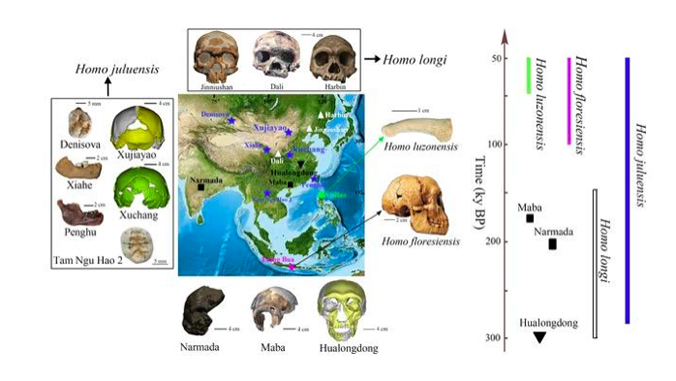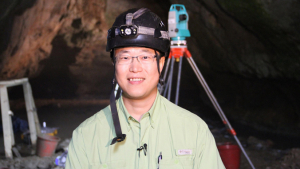
A University of Hawaiʻi researcher says he may have found a new human species called Homo juluensis, which includes mysterious groups like the Denisovans—ancient human relatives whose histories are still being uncovered.

Professor Christopher J. Bae from the University of Hawaiʻi at Mānoa’s Department of Anthropology in the College of Social Sciences has been studying human ancestors across Asia for more than 30 years. His recent research, published in Nature Communications, helps clear up some of the confusion about the different types of ancient human-like species that co-existed in the region during the late Middle and early Late Pleistocene, a period roughly 300,000 to 50,000 years ago.
Homo juluensis lived approximately 300,000 years ago in eastern Asia, hunted wild horses in small groups, and made stone tools and possibly processed animal hides for survival before disappearing around 50,000 years ago. Importantly, it was proposed that the new species include the enigmatic Denisovans, a population known primarily through DNA evidence from a few physical remains found in Siberia, and a few fossils found in Tibet and Laos. More research is clearly needed to test this relationship, which is primarily based on similarities between jaw and teeth fossils from these different sites.
Organization breakthrough
Bae credits a new way of organizing fossil evidence for the breakthrough. Some may think of it as organizing an old family photo album where some pictures are blurry or hard to identify. Bae and his research team have essentially created a clearer system for sorting and understanding these ancient human fossils from China, Korea, Japan and southeast Asia.
“This study clarifies a hominin fossil record that has tended to include anything that cannot easily be assigned to Homo erectus, Homo neanderthalensis or Homo sapiens,” Bae said. “Although we started this project several years ago, we did not expect being able to propose a new hominin (human ancestor) species and then to be able to organize the hominin fossils from Asia into different groups. Ultimately, this should help with science communication.”
This work is important because it helps scientists—and the rest of us—better understand the complex story of human evolution in Asia, filling in some of the gaps in our understanding of our ancient relatives.
Bae’s Nature Communications co-author is Xiujie Wu, a senior professor from the Institute of Vertebrate Paleontology and Paleoanthropology, Chinese Academy of Sciences, in Beijing, China, and lead author on the taxonomic assignment and description of Homo juluensis.
Bae also talks about Homo juluensis in his book, “The Paleoanthropology of Eastern Asia,” published in September 2024 by UH Press.
Bae also currently serves as director of the UH Mānoa Center for Korean Studies in the College of Arts, Languages & Letters.

